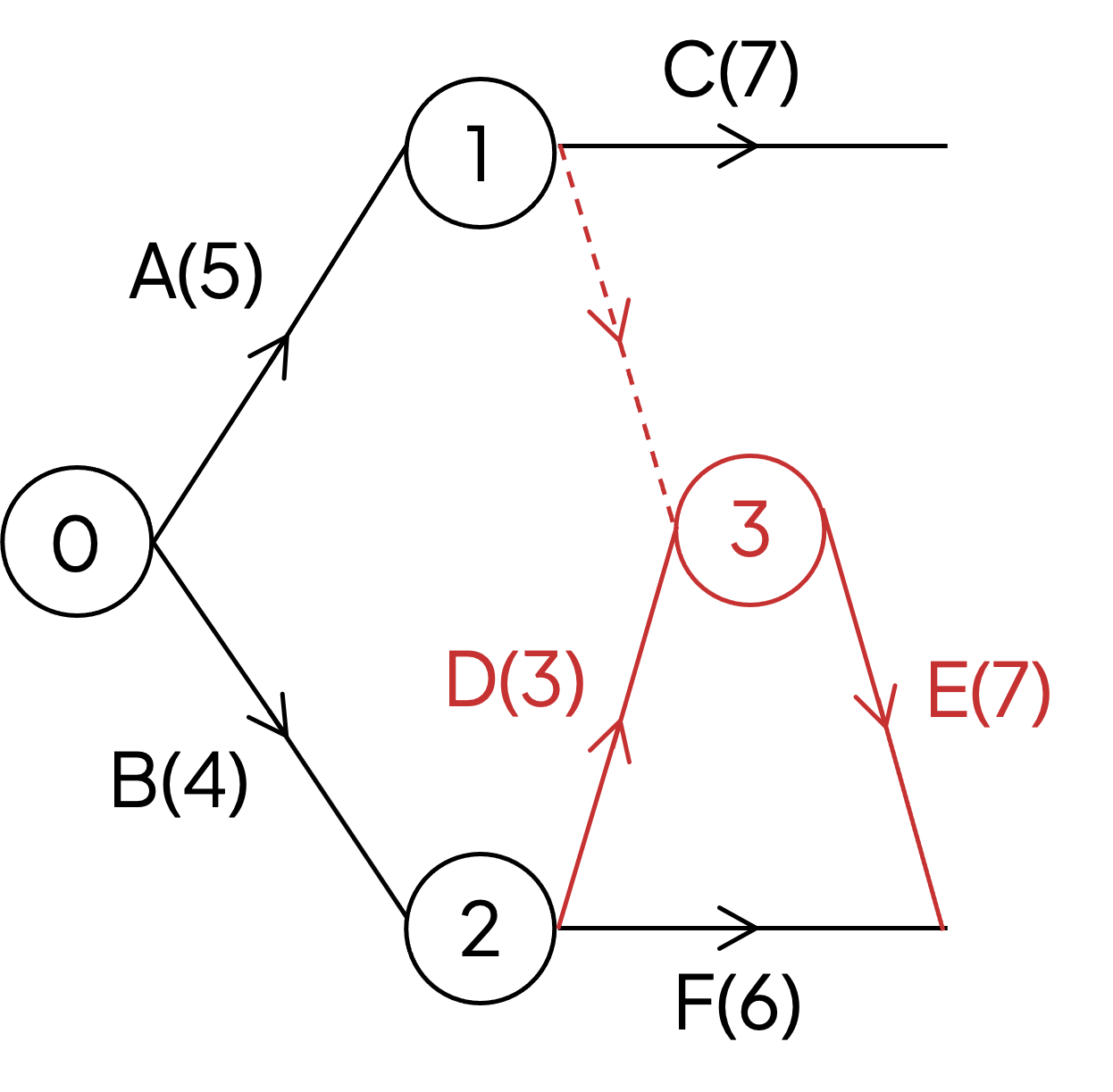Dummies
What is a dummy activity?
- A dummy activity is an activity that has a weight of zero
- dummies are not assigned names (letters)
- dummies are represented by dotted lines
- Dummies are used to show precedences in more complicated activity networks
When and where are dummies used in an activity network?
- Two situations can lead to the need for a dummy activity
- The first situation is to ensure each activity (arc) has a unique pair of start and end nodes
- e.g. in the activity network below, activity D has immediate predecessors B and C
- but B and C cannot both start at event/node 1 and end at event/node 2 (this would not be a unique pair)
- a dummy activity is used so that B has start/end pair (1, 3) and C has start/end pair (1, 2)
- e.g. in the activity network below, activity D has immediate predecessors B and C

-
- Note that the dummy could also go from event 2 to event 3 with activity D commencing from event 3
- The second situation that requires a dummy is when there is a split of immediate predecessors
- e.g. in the activity network below, activity D has immediate predecessors B and C
- but activity E only has B as an immediate predecessor
- a dummy activity is used to show that D depends on both B and C
- e.g. in the activity network below, activity D has immediate predecessors B and C

Exam Tip
- Exam questions will not always require you to draw the whole activity network
- a diagram of part of the network may be given
- Exam questions are often specific about the number of dummies you should use
- if you think you need more, go back to see if you can make improvements
- it is generally expected that an activity network is as concise/efficient as possible with the minimum use of dummies
Worked example
The activities involved in a project are listed in the precedence table below.
| Activity | Immediately preceding activities | Duration (days) |
| A | - | 5 |
| B | - | 4 |
| C | A | 7 |
| D | B | 3 |
| E | A, D | 7 |
| F | B | 6 |
| G | C | 6 |
| H | C | 4 |
| I | G, H | 5 |
| J | E, F | 4 |
The project is also represented on the partially completed activity network below.

Using exactly two dummy activities, complete the activity network by adding activities D, E, G, H, I and J.
Activity D is dependent on activity B so draw an arc from event/node 2 for D
Looking ahead, activity E is dependent on both A and D, whereas activity C is dependent on just A
This is the second situation ('split predecessors') for the use of a dummy activity
Also from looking ahead activity J depends on both E and F - so the arcs for E and F will need to meet

Activities G and H are both dependent on C, and activity I is dependent on both G and H
This could lead to G and H having the same start/end node pair
This is the first situation ('unique start/end node pair') for the use of a dummy activity
No activities depend on I so its arc can be drawn to the end of the project (sink node)

The activity network can now be completed with activity J and the sink node


